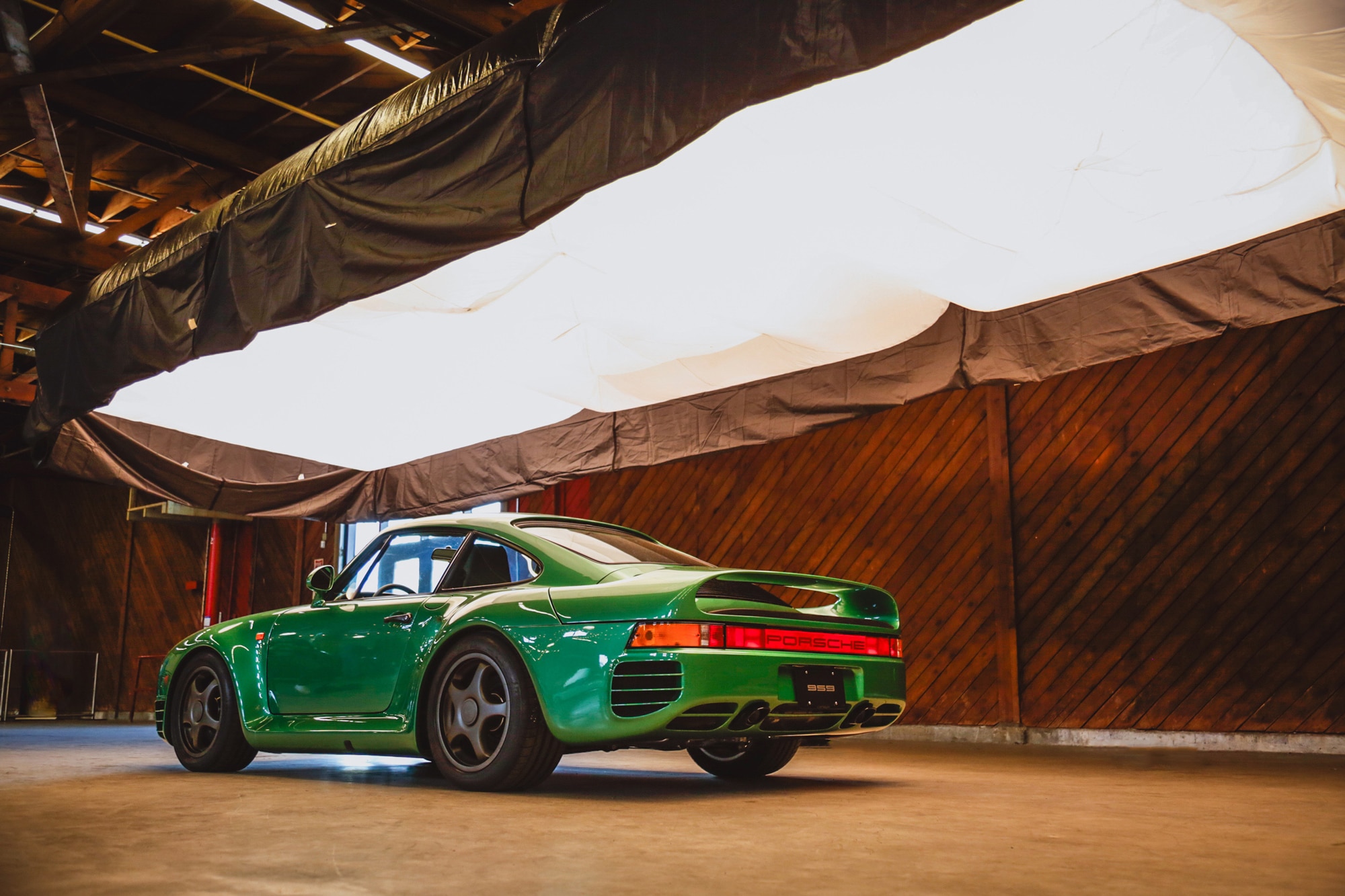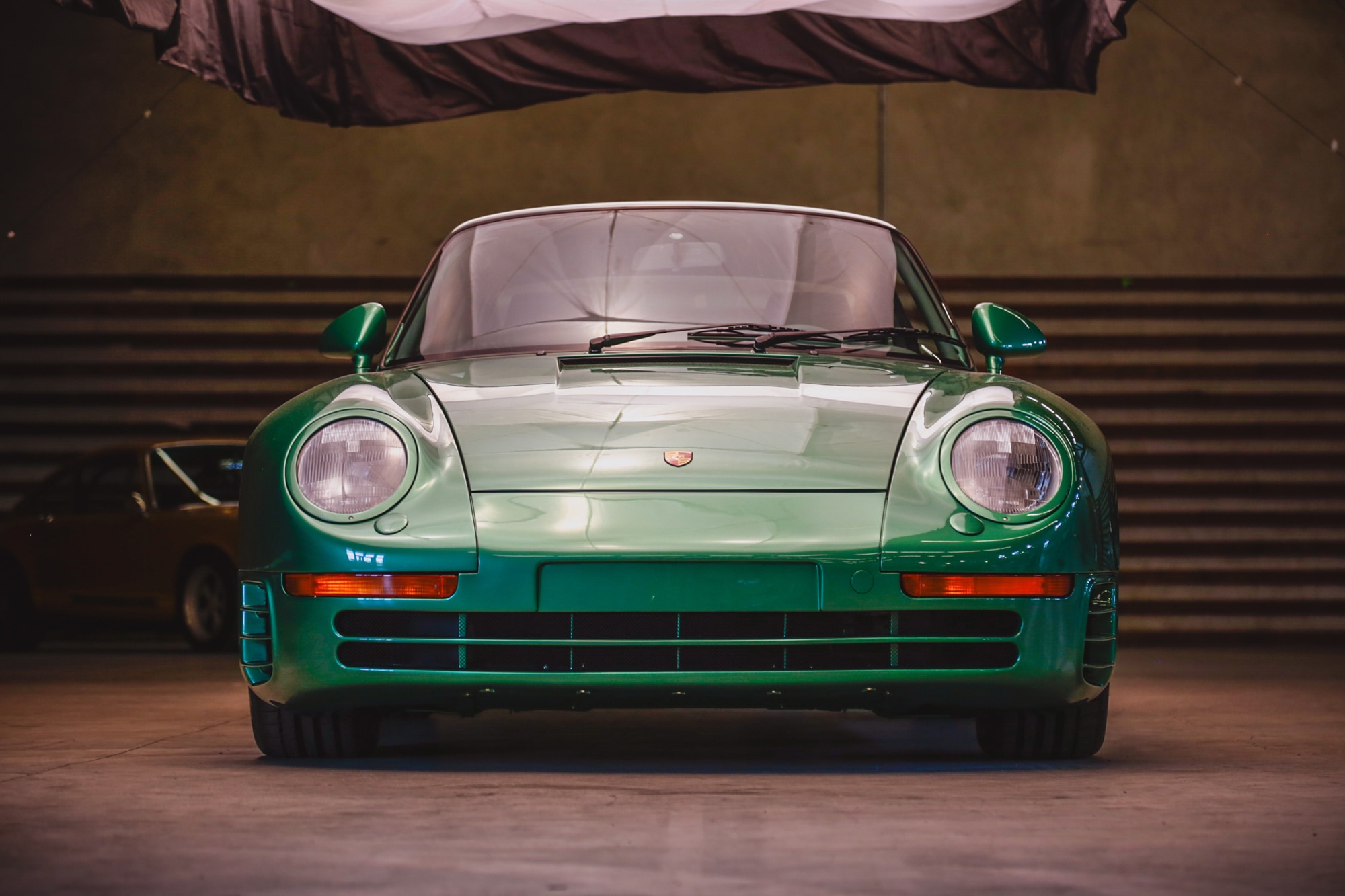How Bill Gates and Bruce Canepa Opened the U.S. Up to Cooler Imported Cars
Legal wrangling over the groundbreaking Porsche 959 brought a big win for car collectors.
 Manuel Carrillo III | Capital One
Manuel Carrillo III | Capital One
Car collectors who dream of cruising in some of the rarest, most desirable automobiles ever made — models that were once all but forbidden in the U.S. — can thank software magnate and philanthropist Bill Gates and Porsche guru Bruce Canepa for making it possible to import these vehicles.
The billionaire Microsoft founder's crush on the fabulous Porsche 959 found him carrying a torch for more than a decade as his precious car sat in a California port, impounded by U.S. customs. When Gates' 959 was finally freed around 1999 — thanks to years of lobbying and legal wrangling by Canepa — it opened the door to dozens of European and Asian models that had long been denied entry.
Such cars, including Mercedes' burly status symbol the Gelandewagen (G-Wagen) SUV, were part of a nebulous "gray market" of prized models or obscure oddballs that couldn't legally be sold in the U.S. but that enterprising sorts managed to slip into the country anyway. These gray-market machines were never officially certified as meeting U.S. crash and emissions standards, and at less than 25 years old, they also weren't quite gray enough in age to meet the threshold for freely importing classic cars.
"There were still ways to get these cars, but you had to jump through hoops," said David Brynan, a senior specialist at auction house Gooding and Company.
 Manuel Carrillo III | Capital One
Manuel Carrillo III | Capital One
The "Perfect" Porsche, per Bill Gates
Originally envisioned in 1981 as an off-road rally racer, the Porsche 959 was an ahead-of-its-time wonder. The most technologically advanced road car of its era, it was a forerunner of supercars from the likes of Ferrari, McLaren, and Lamborghini. With its twin-turbocharged 444-hp flat-six engine, novel all-wheel-drive system, and a body rippling with aluminum and Kevlar, the streamlined Porsche could nip 197 mph and rip to 60 mph in 3.7 seconds, unheard-of capabilities in 1986. The roughly $225,000 price was equally stunning, nearly three times that of a Ferrari Testarossa.
When
For all that, the 959's torturous, money-is-no-object development left it missing both its window for racing and popularity in the market, having been trumped by Ferrari's new F40. Porsche built just 345 copies, including prototypes and a final model cobbled together from spare parts. The company ended up losing perhaps $500,000 on each hand-built specimen after its American ambitions were thwarted.
"Our customers are entrepreneurs," Porsche's CEO told
According to the book "Porsche 959: Birth of a Legend," Porsche refused to provide U.S. regulators with four complete examples of the rarefied 959 for crash testing, and the car's fate was sealed. The company hoped to sell 29 special 959 Sport models, built for U.S. customers as "race cars" through Porsche North American racing boss Al Holbert. But after the first eight cars arrived at Holbert's shop, federal inspectors' suspicions were aroused by leather interiors and other showroom features. Following Holbert's death, those cars were shipped back to Germany and resold.
An enterprising Otis Chandler, the car enthusiast and then-publisher of the Los Angeles Times, managed to import the country's first 1988 959 Sport for display in his Oxnard, California, museum. His special exemption required the $336,000 Porsche to be the equivalent of a Brancusi sculpture, never to be driven, raced, titled, or licensed. Even the fluids had to be drained to ensure no impromptu joyrides. Chandler's 959 came up for a Gooding & Company auction in Pebble Beach in 2019 at an estimated $2 million to $2.4 million, but it didn't sell.
 Manuel Carrillo III | Capital One
Manuel Carrillo III | Capital One
A Legal Path to Entry
In the early '90s, Canepa recruited a Washington, D.C., attorney to lobby the U.S. Environmental Protection Agency, the National Highway Traffic Safety Administration, and automakers. The lobbyist also represented Gates, Chandler, fashion luminary Ralph Lauren, and Paul Allen, the Microsoft co-founder whose own 959 had also been seized at customs.
Canepa recalled the grinding, multi-year battle that finally resulted in a "Show and Display" amendment in a U.S. Senate transportation bill that was signed by President Bill Clinton in 1998.
"We formulated a law — that if 500 or fewer cars were produced, if they weren't currently produced, they were never U.S.-legal, and if they were rare — you could import them without having to pass DOT standards," Canepa told
That's where we stand today, with a Show and Display amendment that allows qualifying cars with historical or technological significance to be imported without passing crash or emissions tests. As of 2023, Canepa has turned more than a dozen vintage 959s into "959 SCs" (Sport Canepa models) via 800-hp fantasy restorations at his California shop.
 Manuel Carrillo III | Capital One
Manuel Carrillo III | Capital One
No Longer Off-Limits
Myriad 959s are now in U.S. collections, trading hands, or popping up at vintage races and other events. A 2015 Gooding and Company auction saw a 1988 959 Komfort model sell for more than $1.73 million. And enough time has passed that the 959 and other '80s and '90s models no longer need the federal exemption.
"Some of the earliest gray-market cars have aged out, and we're into a new generation of cars using that program," Brynan said.
There are now more than 60 models on the list of federally approved Show and Display cars. They include the usual suspects — supercars such as the McLaren F1, Lamborghini Diablo GT, and Koenigsegg One:1. But the list makes room for obscurities too, including the 1987 Ford Falcon Bathurst Cobra, Mazda Eunos Cosmo Series II, Maserati Shamal, and plenty of surprisingly affordable models as well.
"It's allowed both really unobtainable cars, but also really interesting enthusiast cars that aren't so valuable," Brynan said. "It recognizes that there are all kinds of compelling cars."
Written by humans.
Edited by humans.
 Lawrence Ulrich
Lawrence UlrichLawrence Ulrich is an award-winning auto writer and regular contributor for a variety of national newspapers, magazines, and web sites. He and his territorial cat are Brooklyn-based. Lawrence is also the proud owner of a fast-but-frustrating 1993 Mazda RX-7 twin-turbo R1.
Related articles
View more related articles